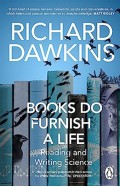- Home
- Books
- Categories
- Non Fiction
- Innovation and Technology
- Artificial Intelligence
- How We Learn: The New Science of Education and the Brain
How We Learn: The New Science of Education and the Brain
By: Stanislas Dehaene
-
Rs 2,795.00
Due to constant currency fluctuation, prices are subject to change with or without notice.
Humanity's greatest feat is our incredible ability to learn. Even in their first year, infants acquire language, visual and social knowledge at a rate that surpasses the best supercomputers. But how, exactly, do our brains learn?
In How We Learn, leading neuroscientist Stanislas Dehaene delves into the psychological, neuronal, synaptic and molecular mechanisms of learning. Drawing on case studies of children who learned despite huge difficulty and trauma, he explains why youth is such a sensitive period, during which brain plasticity is maximal, but also assures us that our abilities continue into adulthood. We can all enhance our learning and memory at any age and 'learn to learn' by taking maximal advantage of the four pillars of the brain's learning algorithm: attention, active engagement, error feedback and consolidation.
The human brain is an extraordinary machine. Its ability to process information and adapt to circumstances by reprogramming itself is unparalleled, and it remains the best source of inspiration for recent developments in artificial intelligence. How We Learn finds the boundary of computer science, neurobiology, cognitive psychology and education to explain how learning really works and how to make the best use of the brain's learning algorithms - and even improve them - in our schools and universities as well as in everyday life.
Humanity's greatest feat is our incredible ability to learn. Even in their first year, infants acquire language, visual and social knowledge at a rate that surpasses the best supercomputers. But how, exactly, do our brains learn?
In How We Learn, leading neuroscientist Stanislas Dehaene delves into the psychological, neuronal, synaptic and molecular mechanisms of learning. Drawing on case studies of children who learned despite huge difficulty and trauma, he explains why youth is such a sensitive period, during which brain plasticity is maximal, but also assures us that our abilities continue into adulthood. We can all enhance our learning and memory at any age and 'learn to learn' by taking maximal advantage of the four pillars of the brain's learning algorithm: attention, active engagement, error feedback and consolidation.
The human brain is an extraordinary machine. Its ability to process information and adapt to circumstances by reprogramming itself is unparalleled, and it remains the best source of inspiration for recent developments in artificial intelligence. How We Learn finds the boundary of computer science, neurobiology, cognitive psychology and education to explain how learning really works and how to make the best use of the brain's learning algorithms - and even improve them - in our schools and universities as well as in everyday life.
How We Learn: The New Science of Education and the Brain
By: Stanislas Dehaene
Rs 2,795.00 Ex Tax :Rs 2,795.00
Zubin Mehta: A Musical Journey (An Authorized Biography)
By: VOID - Bakhtiar K. Dadabhoy
Rs 840.00 Rs 1,050.00 Ex Tax :Rs 840.00
Books do Furnish a Life: An electrifying celebration of science writing
By: Richard Dawkins
Rs 2,795.00 Ex Tax :Rs 2,795.00
Complete English as a Foreign Language: Teach Yourself
By: Sandra Stevens
Rs 1,436.00 Rs 1,795.00 Ex Tax :Rs 1,436.00
Genius Makers : The Mavericks Who Brought A.I. to Google, Facebook, and the World
By: Cade Metz
Rs 3,495.00 Ex Tax :Rs 3,495.00
The Alignment Problem - How Can Machines Learn Human Values?
By: Brian Christian
Rs 2,295.00 Ex Tax :Rs 2,295.00
Scary Smart: The Future of Artificial Intelligence and How You Can Save Our World
By: Mo Gawdat
Rs 3,795.00 Ex Tax :Rs 3,795.00
System Error : Where Big Tech Went Wrong and How We Can Reboot
By: Rob Reich
Rs 2,155.50 Rs 2,395.00 Ex Tax :Rs 2,155.50
How to Stay Smart in a Smart World: Why Human Intelligence Still Beats Algorithms
By: Gerd Gigerenzer
Rs 3,145.50 Rs 3,495.00 Ex Tax :Rs 3,145.50
A Thousand Brains - A New Theory of Intelligence
By: Jeff Hawkins
Rs 5,395.50 Rs 5,995.00 Ex Tax :Rs 5,395.50
Futureproof - 9 Rules for Humans in the Age of Automation
By: Kevin Roose
Rs 1,695.00 Ex Tax :Rs 1,695.00
Scary Smart : The Future of Artificial Intelligence and How You Can Save Our World
By: Mo Gawdat
Rs 2,795.00 Ex Tax :Rs 2,795.00
Books do Furnish a Life: An electrifying celebration of science writing
By: Richard Dawkins
Rs 2,795.00 Ex Tax :Rs 2,795.00
Complete English as a Foreign Language: Teach Yourself
By: Sandra Stevens
Rs 1,436.00 Rs 1,795.00 Ex Tax :Rs 1,436.00
No recently viewed books available at the moment.
Zubin Mehta: A Musical Journey (An Authorized Biography)
By: VOID - Bakhtiar K. Dadabhoy
Rs 840.00 Rs 1,050.00 Ex Tax :Rs 840.00
How We Learn: The New Science of Education and the Brain
By: Stanislas Dehaene
Rs 2,795.00 Ex Tax :Rs 2,795.00
Books do Furnish a Life: An electrifying celebration of science writing
By: Richard Dawkins
Rs 2,795.00 Ex Tax :Rs 2,795.00
Complete English as a Foreign Language: Teach Yourself
By: Sandra Stevens
Rs 1,436.00 Rs 1,795.00 Ex Tax :Rs 1,436.00














-120x187.jpg?q6)



















